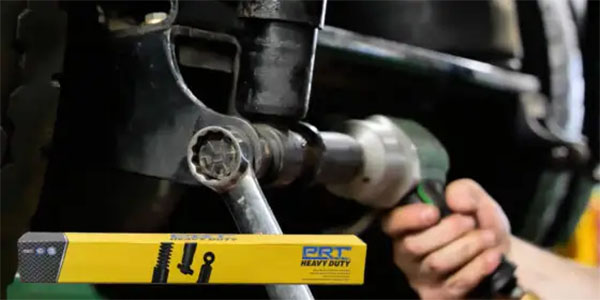Before you can diagnose a suspected faulty wheel speed sensor, you need to have a good understanding of the type of sensor you’re working on and how it functions. There are two different types of wheel speed sensors – Active or passive. There is no way to visually identify which type of sensor you’re dealing with. OE service information won’t specify the sensor type, and neither will the DTCs.
Passive Wheel Speed Sensors
Passive wheel speed sensors are two-wire permanent magnet sensors. They produce an AC voltage signal which is generated when a toothed tone ring or reluctor passes by the sensor. This reluctor may be part of the CV axle or wheel bearing assembly.
To test the sensor, disconnect the harness and use a DVOM to measure the AC voltage generated by the sensor as you spin the wheel by hand. You should see a reading of around 0.5-1.0 volts. The faster the wheel spins, the higher the voltage output.
Some passive sensors may receive DC voltage through the ground wire from the ABS module. To test this type of sensor, disconnect the sensor and backprobe the positive lead to the signal wire and the negative lead to the other side. This voltage comes directly from the ABS module and should be between 1.5 and 5 volts.
Active Wheel Speed Sensors
Active wheel speed sensors use two look the same as passive sensors, but they are much more accurate at lower speeds. Active sensors output a digital signal, a DC square wave signal. To test this type of sensor you’ll need a scan tool which can communicate with the ABS module, or a DVOM which can graph a digital voltage signal.
Active vs. Passive: Real World Example
Let’s look at a real word example of why it is so important to identify which type of sensor you are working with, the 2007 model year Chevy Silverado and GMC Sierra. In this single model GM produced two different platform trucks, the GMT 800 platform trucks which came with passive sensors and the GMT 900 platform trucks which came with active sensors. If you were working on one of these very common trucks, you would need to know more than just the year, make, model to determine which type of sensor you are working with.
This video is sponsored by BCA Bearings.













